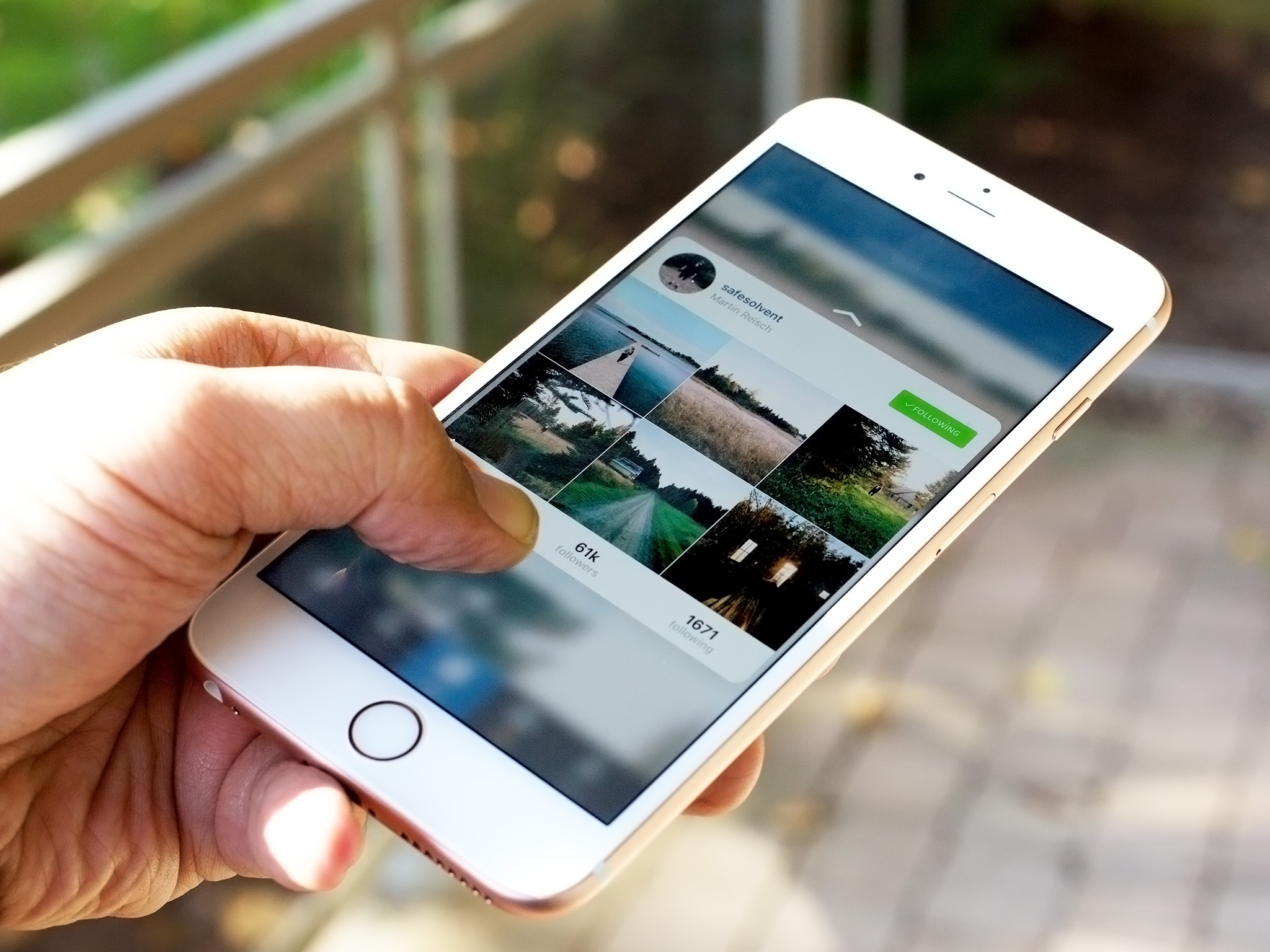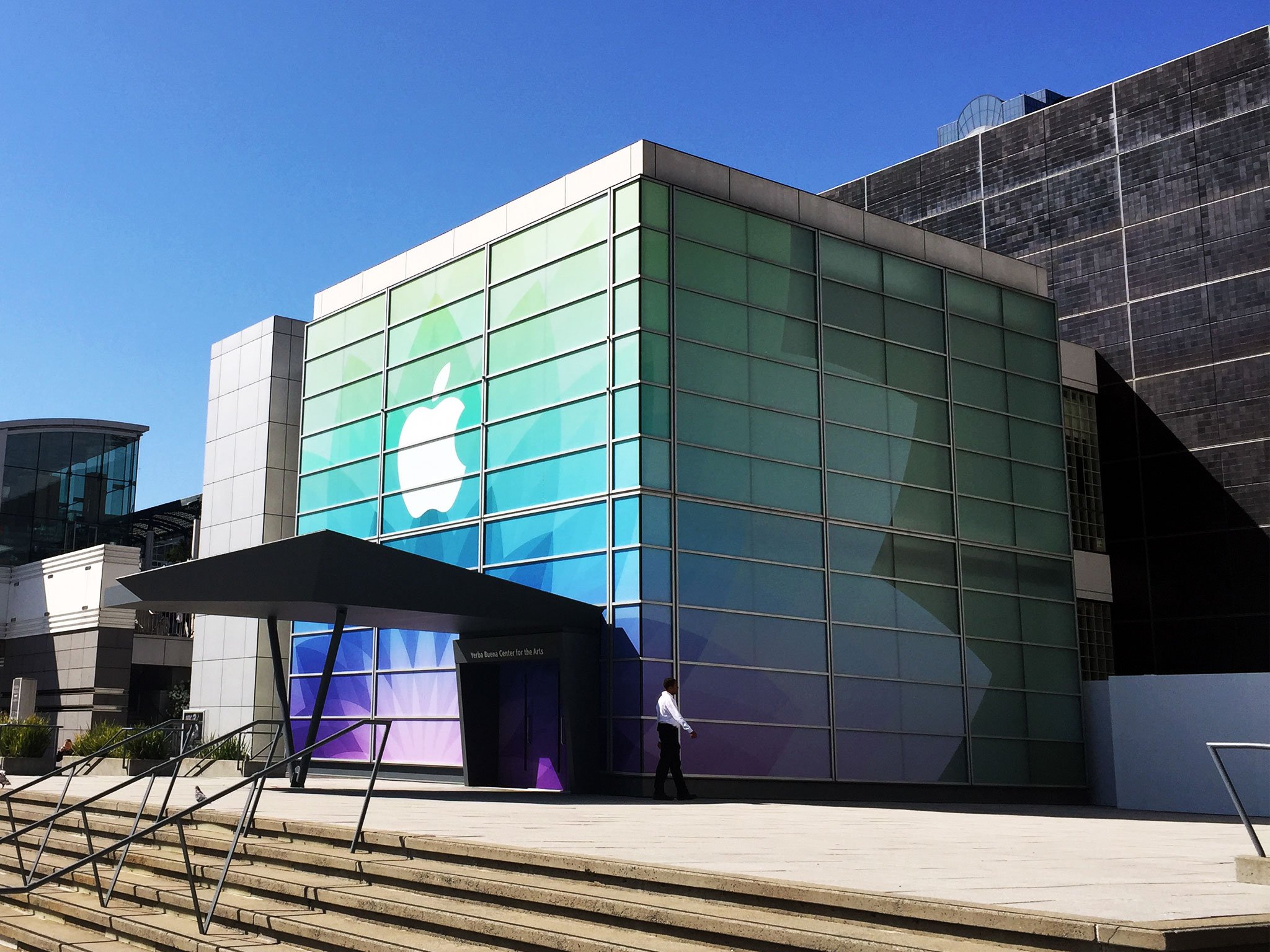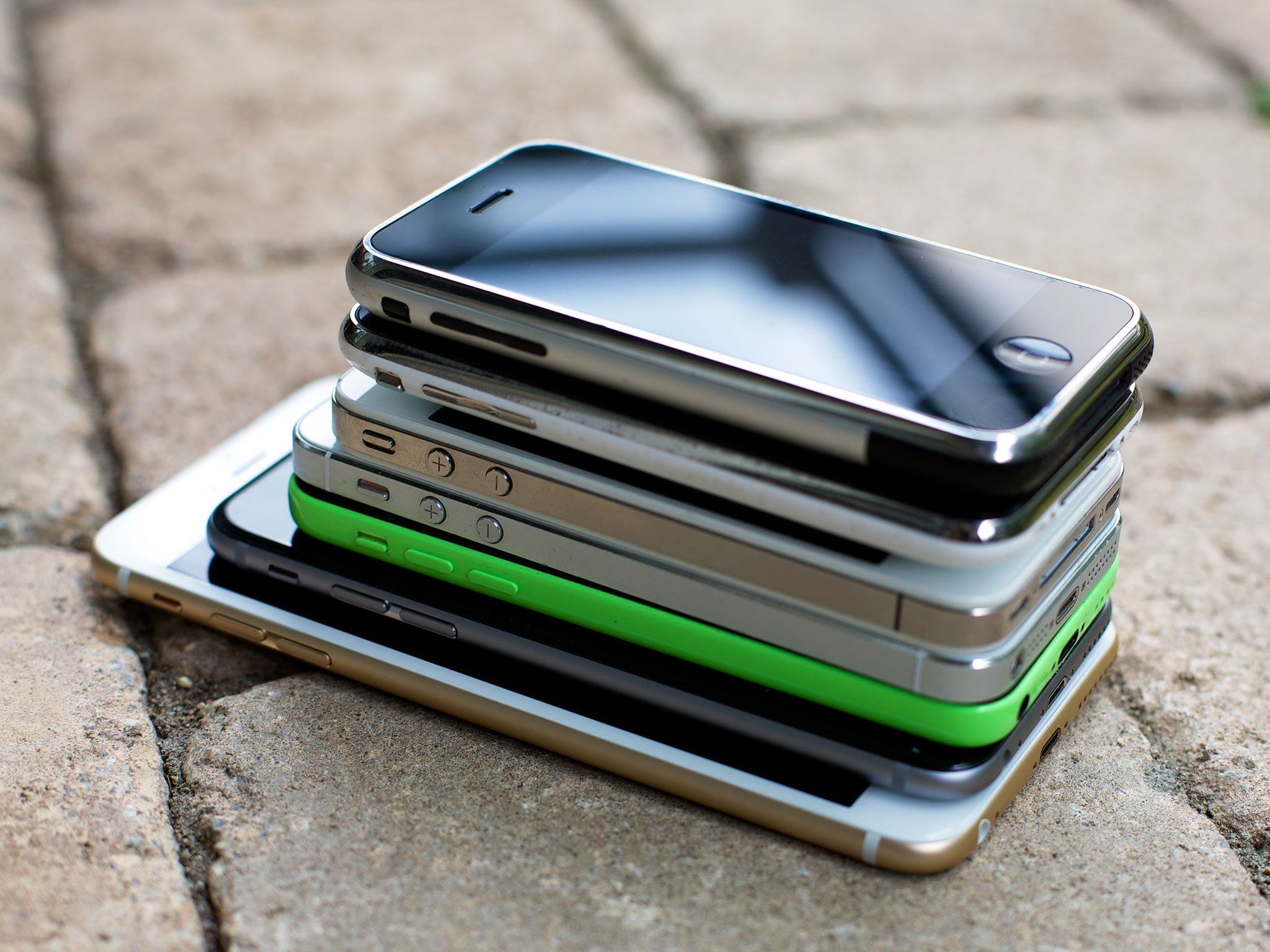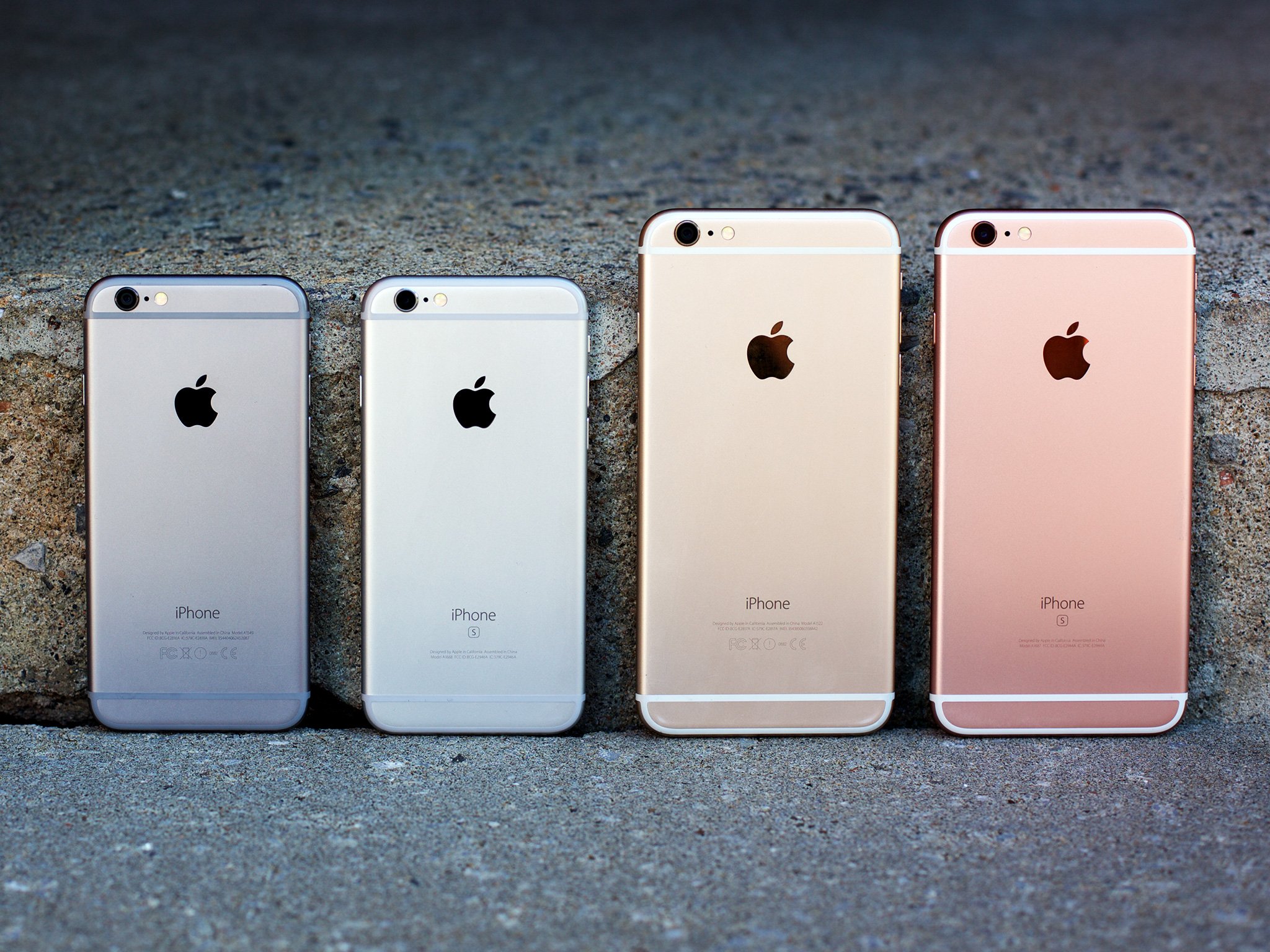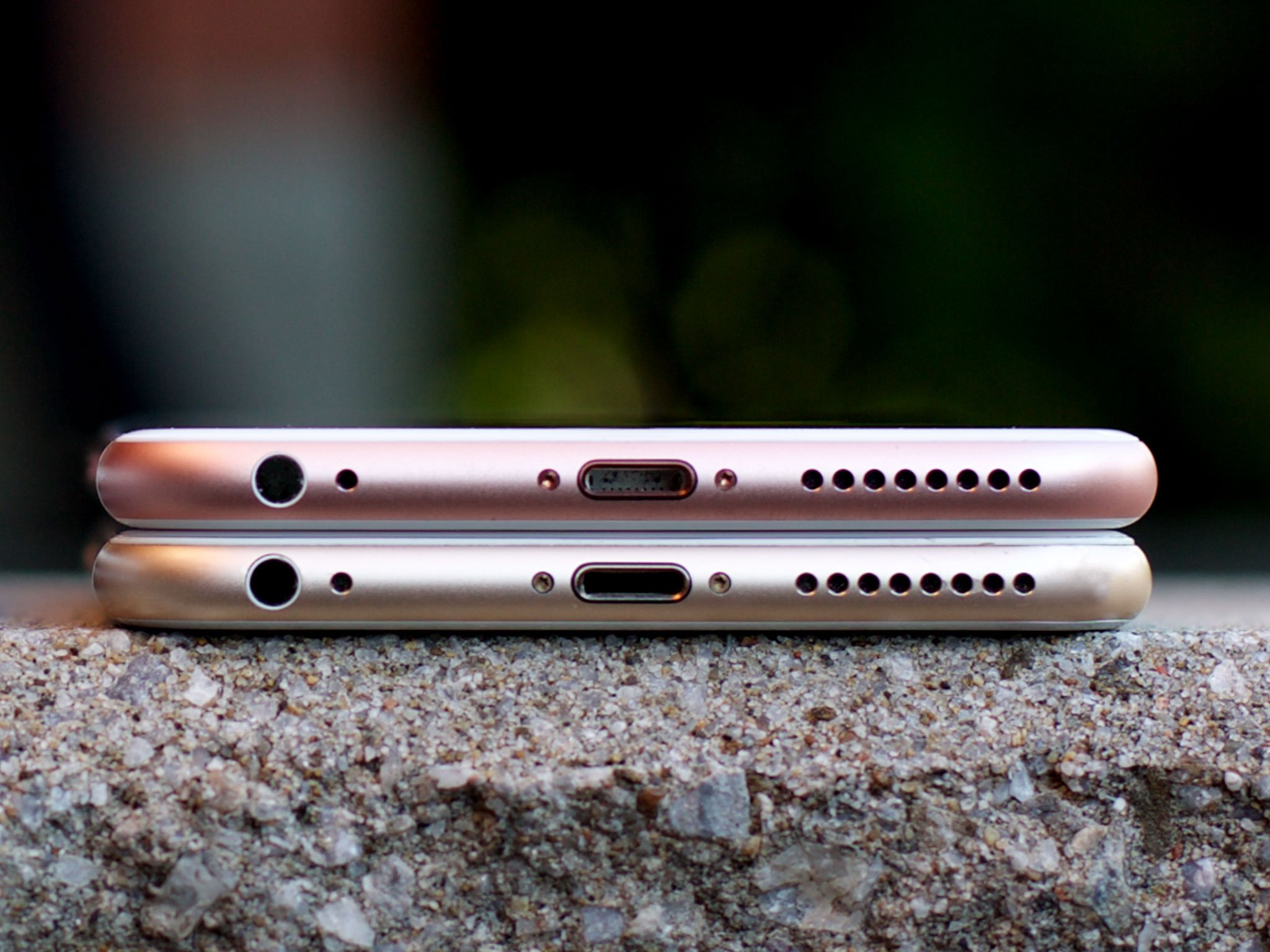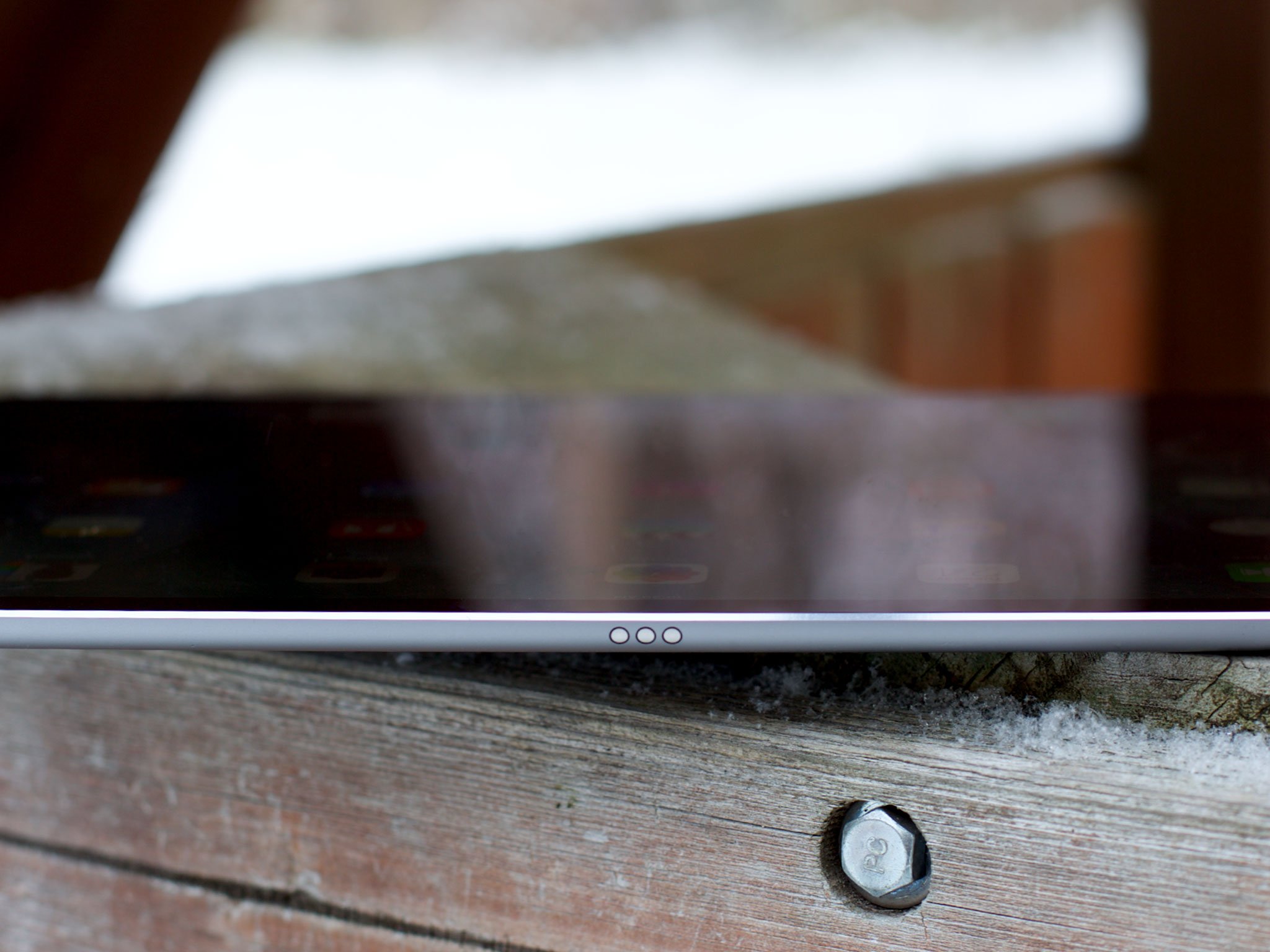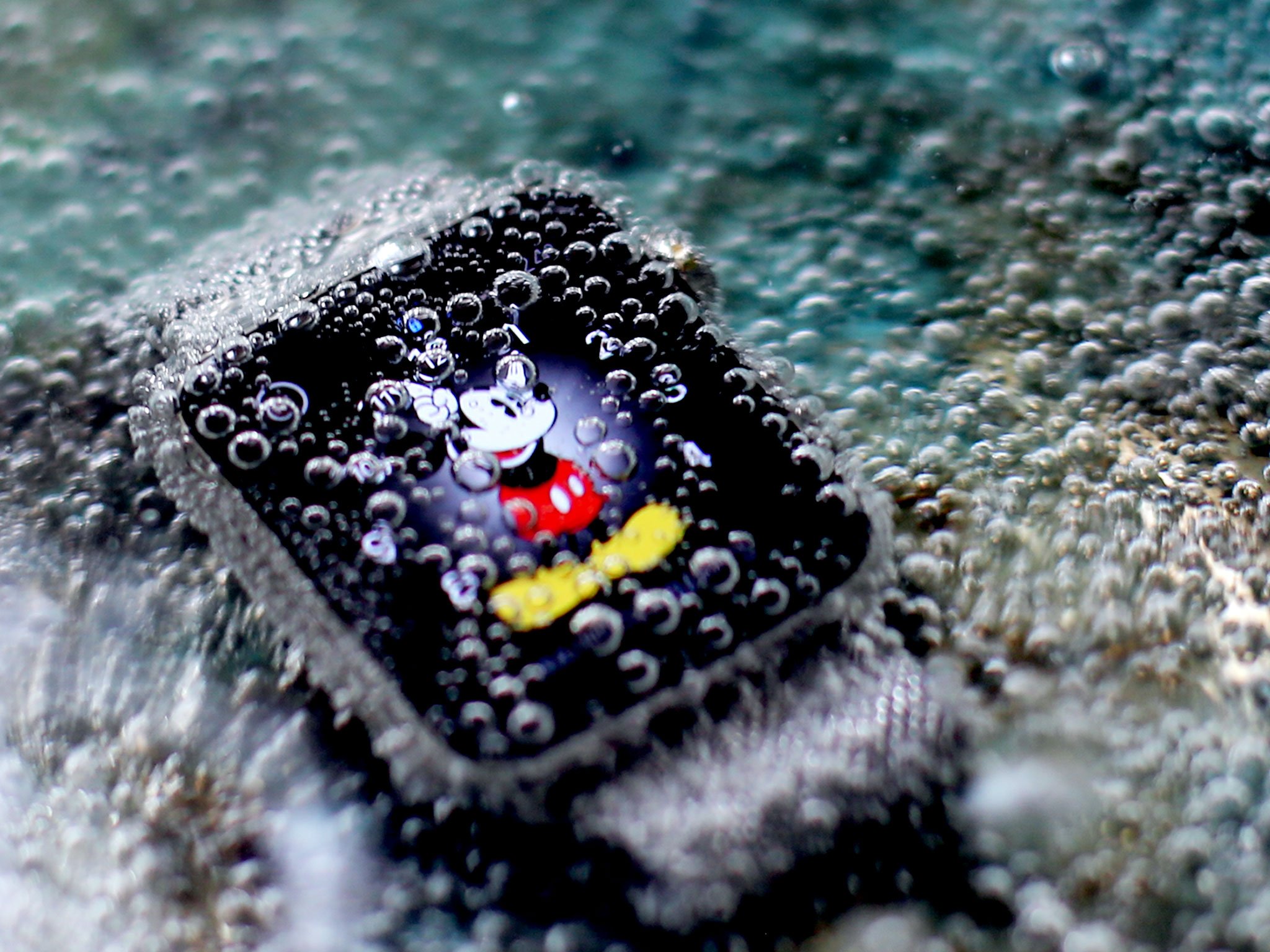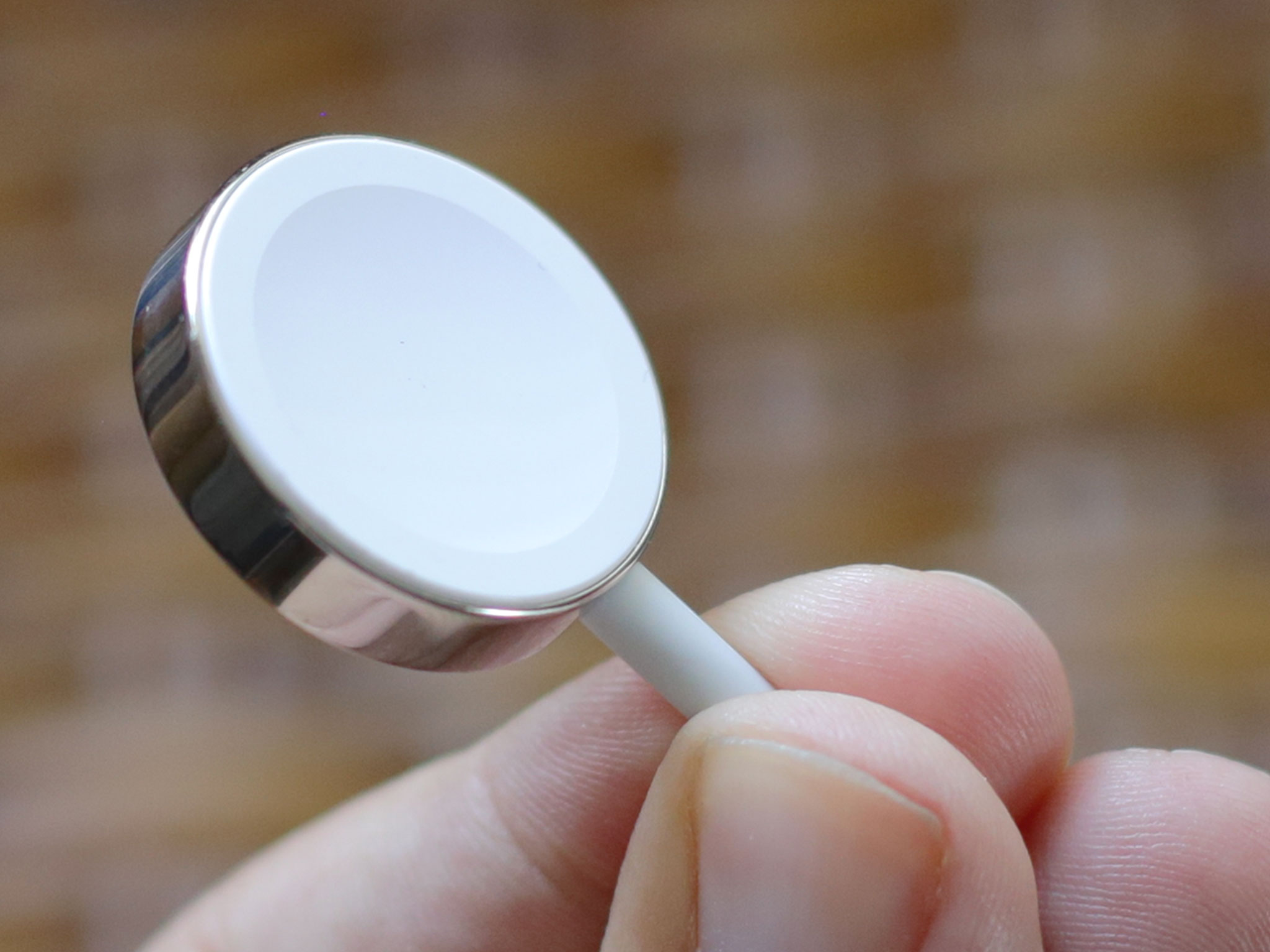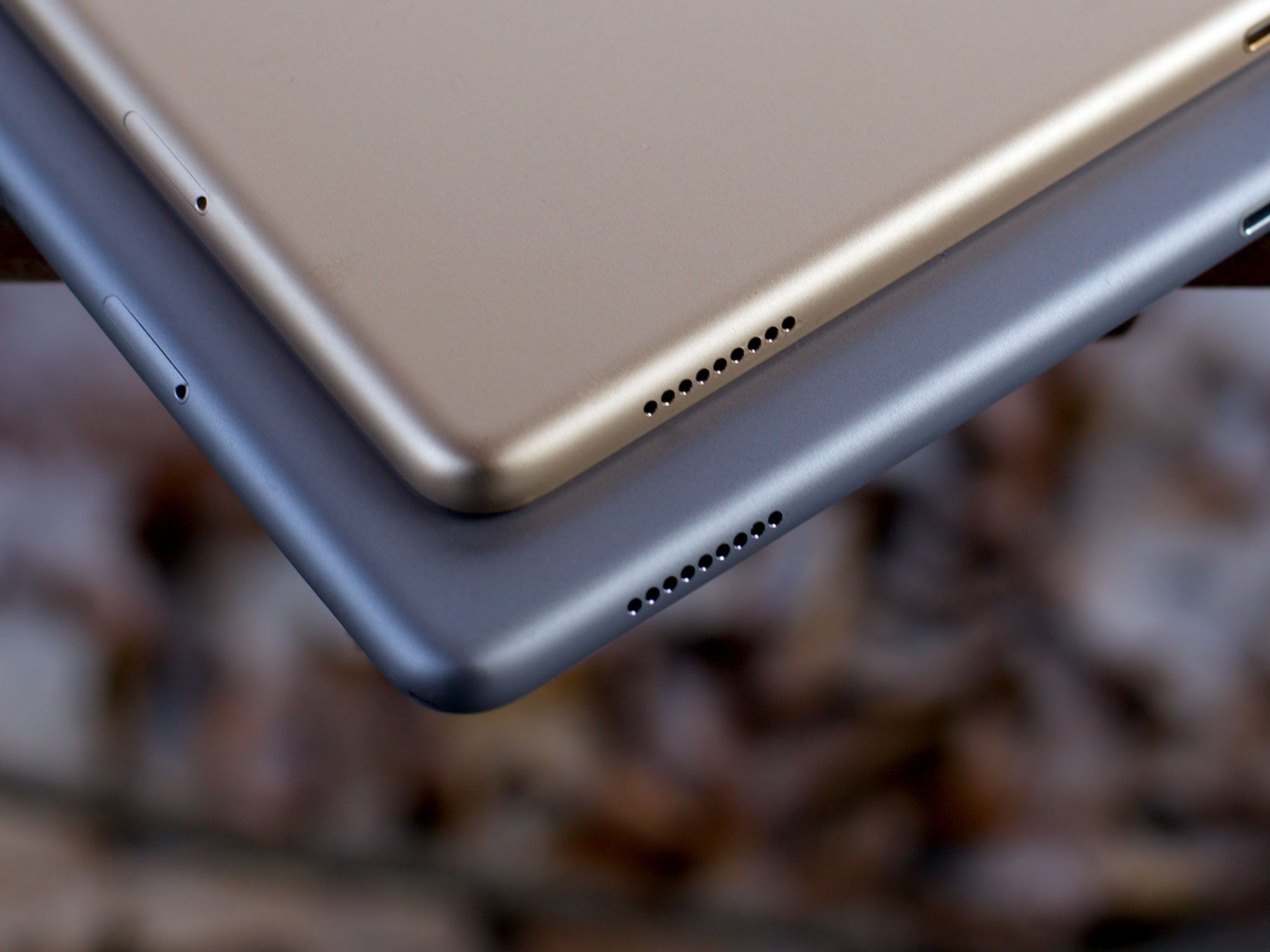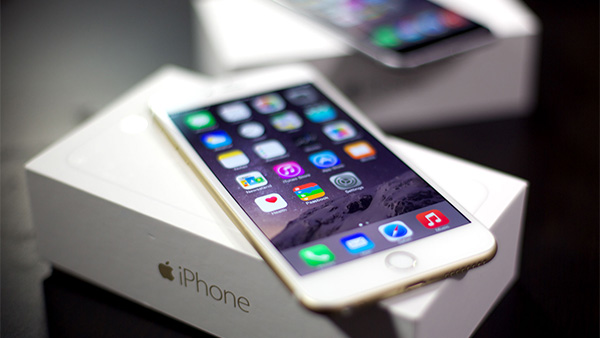iPhone 7: Rumor roundup
- mar
- 08
- Posted by Michael
- Posted in Okategoriserade
When is iPhone 7 being released? What will the specs be? Will it have special features? Here's everything we know!
iPhone 7 is the presumed name for Apple's next generation iPhone. If Apple holds to pattern, iPhone 7 would launch in September of 2016. It may or may not feature a major new design, but will almost certainly feature more powerful internals and new features as well.
Note: This article is continuously updated to include the latest news and rumors. Bookmark it, save it, share it, and check back often!
Will it be called the iPhone 7?
If Apple sticks to the same pattern the company has been using since 2010, the 2015 iPhone 6s will be followed by the 2016 iPhone 7.
- iPhone: 2007
- iPhone 3G: 2008
- iPhone 3GS: 2009
- iPhone 4: 2010
- iPhone 4s: 2011
- iPhone 5: 2012
- iPhone 5s: 2013
- iPhone 6: 2014
- iPhone 6s: 2015
Any pattern can be broken, of course, and Apple can ultimately call any iPhone anything the company wants — iPhone X, iPhone Pro, Apple Phone, etc. iPhone 7 is simply an easy, understandable way to refer to the next-generation flagship iPhone for now.
There are rumors the next iPhone may not have as radical a redesign as previous years, and that it might not even be called iPhone 7. In other words, instead of a tick-tock cycle, we could be getting a tick-tock-tock cycle. More iPhone 6se than iPhone 7, so to speak.
We'll keep updating as we learn more.
Will there be an iPhone 7 Plus?
There was an iPhone 6 and an iPhone 6 Plus, iPhone 6s and iPhone 6s Plus, so if Apple sticks to that pattern, there'll be an iPhone 7 and an iPhone 7 Plus as well.
- iPhone 6 Plus: 2014
- iPhone 6s Plus: 2015
That lets Apple serve customers who want a phone with the 4.7-inch (or thereabouts) display size and customers who want a tiny tablet with the 5.5-inch (or thereabouts) display size.
When will the iPhone 7 be released?
Apple is holding a special event on September 7, 2016 at the Bill Graham Civic Auditorium. It's widely expected the iPhone 7 will headline this event, as it has the last several September events.
Since the iPhone 5, Apple has announced every new iPhone during a special event held the first or second Tuesday or Wednesday of September:
- iPhone 5: September 12, 2012
- iPhone 5s: September 10, 2013
- iPhone 6: September 9, 2014
- iPhone 6s: September 9, 2015
Likewise, since the iPhone 5, Apple has shipped every new iPhone the second Friday following the event, with the exception of the iPhone 6s in 2015, which shipped the third Friday following the event:
- iPhone 5: September 21, 2012
- iPhone 5S: September 20, 2013
- iPhone 6: September 19, 2014
- iPhone 6s: September 25, 2015
With the event on September 7, the iPhone 7, pre-orders could start on September 9, and could be released on Friday the 16th or 23rd.
Past patterns are the best indicator of future events, but they aren't perfect. Apple can and will throw curveballs whenever the company's logistics or strategy demands. So, be aware of the dates but don't be bound to them.
What can we expect in the iPhone 7 design?
At any given point in time, Apple is working several years ahead on the iPhone line. Upcoming models may already be in the testing or prototype stages while future models may be little more than components attached to boards. Sometimes multiple versions will also exist, some more conservative, others more audacious. What eventually ships depends on what can reliably be produced given the limits of technology and economics.
Since 2008 Apple has also followed a "tick-tock" cycle for iPhones. On the "tick" year the company unveils a new design and on the "tock" year the company takes that same design to its limits.
- iPhone 3G: 2008 — Plastic shell.
- iPhone 4: 2010 — Antenna band and glass back.
- iPhone 5: 2012 — 16:9 aspect ratio, chamfered edges.
- iPhone 6: 2014 — Bigger screens, rounded edges.
Rumor has it the next big iPhone redesign won't be until next year, though. That means 2016 might see an unprecedented second tock. And that would mean the bigger redesign, the one with less bezel around the sides and at the top and bottom and virtualized buttons wouldn't come until 2017...
That leaves less drastic changes for now, including new antenna lines.
What colors will the iPhone 7 be offered in?
So far Apple has saved the new iPhone finishes for the S models.
- iPhone 5s: 2013 — Gold.
- iPhone 6s: 2015 — Rose gold.
Again, Apple can do anything the company wants, any time the company wants, but if Apple holds to pattern we won't see another new finish until the iPhone 7s in 2017. So far, two new colors have been rumored:
- Space Blue (metallic blue).
- Piano Black (glass black).
No word yet on metallic purple, alas. If iPhone 7 is less of a resign than previous odd years, though, a new color could help assuage complaints.
What specs will the iPhone 7 have?
Since Apple introduced the company's first branded system-on-a-chip (SoC) in 2010, every new iPhone has come with a new A-series chipset. If Apple sticks to that pattern, the iPhone 7 and iPhone 7 Plus will ship with Apple A10 processors. New SoC typically take advantage of better processes that let them be faster and more powerful but also more energy efficient.
Apple has also been adding coprocessors to handle motion and, now, voice activation, and the A10 could further build on those capabilities as well.
The custom CPUs Apple has been producing have gone from Swift to Cyclone to Typhoon to Twister, so... Tropical Storm next? Hurricane? Rumors also persist that Apple is working on custom GPUs and even modems as well, which would allow the company to take full control of everything from graphics to radios. Recent reports indicate that Intel will be supplying at least some of the modems for this year's iPhone lineup.
While the iPhone 6s and iPhone 6s Plus finally made the jump to 2GB of RAM, frame drop on the iPhone Plus line has led to requests for 3GB of RAM in the larger phones. More recent versions of iOS, though, have fixed the frame drops, so it's unclear how necessary additional memory really is at this point.
Current iPhones also top out at 128GB of storage. Those with large media collections have gotten their hopes up for a 256GB model. Given the space constraints inside the iPhone, the costs of higher density memory, and the lengths Apple has gone to improve efficiencies with app thinning and nearline management, it's also unclear how realistic 256GB would be this year. According to recent reports the iPhone 7 may start at 32GB of storage.
Will the iPhone 7 have a 3.5mm headphone jack?
Apple, like almost every major vendor, has considered life after the 100+-year-old headphone jack. It's not much thicker than a Lightning port, but it's an extra hole, it's analog, and it takes up space inside a casing that has precious little of it to spare. This year, though, rumor has it Apple may be serious about finally ditching the 3.5mm headphone jack.
Absent a headset jack, digital audio—potentially higher definition—would be provided via the Lightning port. A pair of Lightning EarBuds would be included in the box, Lightning and Bluetooth headphones would be available from Apple's Beats brand and other vendors, and an adapter with a digital audio converter (DAC) would enable the use of older 3.5mm headphones.
What about an iPad Pro-style Smart Connector?
Apple typically introduces a technology in one device and then rolls it out across the lineup. Retina was like that with iPhone 4 and Touch ID with iPhone 5s. The Smart Connector, which debuted with the iPad Pro in the fall of 2015, attaches via a magnet and runs power, data, and ground directly from the device. It currently powers Apple's Smart Keyboard and a similar keyboard from Logitech, with more expected to follow.
Apple could certainly engineer a Smart Connector for iPhone 7, but what it would be used for is a more interesting question. Apple made a smaller Smart Keyboard for the 9.7-inch iPad Pro, but would the company make an even smaller one for iPhone 7 Plus? For iPhone 7 standard?
If not a keyboard, then what else would benefit from a not-Lightning, non-Bluetooth connection on an iPhone 7-sized device? Answer that, and you're a long way towards answering whether or not the Smart Connector will be there.
What about the display? More HDs? True Tones?
Absent major redesign, it's possible there won't be any major screen resolution and density change either. Up until now, Apple has been content with "sharp enough", especially given the emphasis they put on battery life. There have been rumors, though, that we could see a bump to 1920 x 1080 for the 4.7-inch model and 2560 x 1440 for the 5.5-inch model.
Then there's color gamut. The 9.7-inch iPad Pro in March of 2016, came with a DCI-P3 display, which is the current cinematic standard, and with True Tone. True Tone employs two ambient light sensors, with four channels each, to measure the color temperate of the surrounding area and then match the display to that temperature.
If you've ever seen a picture of an iPhone or iPad where the case looks white but the screen looks yellow or blue, that's what True Tone fixes. And once you get used to it, you want it everywhere.
Again, Apple typically pilots a new technology in a new device, but eventually rolls it out across the line. Here's hoping the same holds true with True Tone and we get the incredible calibration and dynamic compensation on iPhone 7 as well.
Will the iPhone 7 be waterproof?
The Apple Watch shipped with "splash proofing" that technically protected it from rain, sweat, and other minor exposure to water. Even so, Apple's CEO, Tim Cook, told people he took it in the shower and, since launch, people have even been swimming with it.
Other vendors have released waterproof phones in the past, but they either used nano coatings that may or may not be compatible with Apple's environmental policies, or they used little flaps to protect ports that could break off and ruin the protection.
The iPhone 6s, while officially possessing nothing in the way of water resistance, has held up startlingly well to splashes and even dunks. That's thanks to a new gasket around the edge and silicon seals inside.
There are rumors that the iPhone 7 will take that even further, with official "splash proofing" and perhaps even more.
Although swimming with an iPhone may not be on everyone's wish-list, those whose jobs or pastimes expose them to the elements, and even those who want to do underwater photography at shallow depths would be thrilled by the feature.
What changes can we expect in the iPhone 7 cameras?
Based on some recent acquisition, including smart camera company PrimeSense, speculation is high that Apple is working on taking even the 12 megapixels, 4K video camera in the iPhone 6s to the next level. What that means for the iPhone 7 is uncertain, though rumor has it Apple is aspiring to make the iPhone camera as good as a DSLR. That includes better low light, dynamic focus and depth of field, and potentially more.
The potentially more part is currently rumored to include two lenses allowing for even more advanced image signal processing. Whether, like optical image stabilization (OIS), that would be limited to the bigger, slightly more expensive Plus model is unknown.
The second lens could be used for wide-angle shots, to add extra data for better shots, or to pull black and white information for clearer, better low-light photography.
Will the iPhone 7 have wireless charging?
Up until mid-2015, it hadn't been possible to do wireless charging—also known as inductive charging—on a phone with a metal back. Since Apple switched from the glass of the iPhone 4 and iPhone 4s to the aluminum of the iPhone 5 and later models, that effectively meant the company couldn't offer wireless charging as well.
Now methods for induction through metal are being introduced, which means it's possible Apple could keep the aluminum back and offer wireless charging. The iPhone 7 is the first iPhone Apple could launch with the feature if the company chooses to.
If Apple is serious about removing the 3.5mm headphone jack, wireless charging would be a way to let customers listen via Lightning while charging via inductive magnet.
Recent rumors have also suggested Apple is working on resonant inductive coupling, which would let devices charge even at a distance. (The greater the distance, the lower the efficiency.) Such technology is likely a year or more away, though.
What about iPad Pro style speakers?
iPad Pro has four speakers, two on each side. They're loud and clear. iPhone, to date, has only had one. Hold it wrong, and no sound for you. While iPhone 7 almost certainly won't have space inside for the large speaker chambers the iPads Pro enjoy, there have been rumors it might get the same number of speakers. That way you could hold it in any orientation, and in any position, and still hear everything.
Okay, what do we know for sure?
Only that nothing is confirmed until an Apple executive holds an iPhone 7 and iPhone 7 Plus up on stage!
Senaste inläggen
- Microsoft’s Surface Pro Flex is even more expensive than Apple’s Magic Keyboard for iPad Pro, but we can only think of one thing it does better
- Is your iPhone Photo Library cluttered and taking up storage? This shortcut will help you take control of your images and declutter your digital memories for good
- MacBook Air under threat — Microsoft’s Surface Laptop 7 boasts 16GB of RAM, 120Hz, and a chip to match (or even beat) M3
- iPad Air 5 has a new lowest price — the best value-for-money iPad drops below $400
- Save up to $249 on a MacBook at Amazon — huge discounts across M3 MacBook Air and M3 MacBook Pro models
Senaste kommentarer
Arkiv
- maj 2024
- april 2024
- mars 2024
- februari 2024
- januari 2024
- december 2023
- november 2023
- oktober 2023
- september 2023
- augusti 2023
- juli 2023
- juni 2023
- maj 2023
- april 2023
- mars 2023
- februari 2023
- januari 2023
- december 2022
- november 2022
- oktober 2022
- september 2022
- augusti 2022
- juli 2022
- juni 2022
- maj 2022
- april 2022
- mars 2022
- februari 2022
- april 2021
- mars 2021
- januari 2021
- december 2020
- november 2020
- oktober 2020
- september 2020
- augusti 2020
- juli 2020
- juni 2020
- maj 2020
- april 2020
- mars 2020
- februari 2020
- januari 2020
- december 2019
- november 2019
- oktober 2019
- september 2019
- augusti 2019
- juli 2019
- juni 2019
- maj 2019
- april 2019
- mars 2019
- februari 2019
- januari 2019
- december 2018
- november 2018
- oktober 2018
- september 2018
- augusti 2018
- juli 2018
- juni 2018
- maj 2018
- april 2018
- mars 2018
- februari 2018
- januari 2018
- december 2017
- november 2017
- oktober 2017
- september 2017
- augusti 2017
- juli 2017
- juni 2017
- maj 2017
- april 2017
- mars 2017
- februari 2017
- januari 2017
- december 2016
- november 2016
- oktober 2016
- september 2016
- augusti 2016
- juli 2016
- juni 2016
- maj 2016
- april 2016
- mars 2016
- februari 2016
- januari 2016
- december 2015
- november 2015
- oktober 2015
- september 2015
- augusti 2015
- juli 2015
- juni 2015
- maj 2015
- april 2015
- mars 2015
- februari 2015
- januari 2015
- december 2014
- november 2014
- oktober 2014
- september 2014
- augusti 2014
- juli 2014
- juni 2014
- maj 2014
- april 2014
- mars 2014
- februari 2014
- januari 2014
Kategorier
- –> Publicera på PFA löp
- (PRODUCT) RED
- 2015
- 25PP
- 2nd gen
- 32gb
- 3D Touch
- 3D-kamera
- 4k
- 64gb
- 9to5mac
- A10
- A9X
- Aaron Sorkin
- Accessories
- adapter
- AirPlay
- AirPods
- Aktiv
- Aktivitetsarmband
- Aktuellt
- Alfred
- AMOLED
- Android Wear
- Angela Ahrendts
- Ångerätt
- announcements
- Ansiktsigenkänning
- app
- App Store
- Appar
- Apple
- Apple Beta Software Program
- Apple Book
- Apple CarPlay
- Apple Event
- Apple iMac
- Apple Mac Mini
- Apple Macbook
- Apple MacBook Air
- Apple MacBook Pro
- Apple Macos
- Apple Maps
- Apple Music
- Apple Music Festival
- Apple Music Radio
- Apple Offer
- Apple Online Store
- Apple Park
- Apple Pay
- Apple Pencil
- Apple Podcast
- Apple Store
- Apple Store 3.3
- Apple TV
- apple tv 4
- Apple TV 4K
- Apple Watch
- Apple Watch 2
- Apple Watch 8
- Apple Watch 9
- Apple Watch Apps
- Apple Watch SE
- Apple Watch Series 2
- Apple Watch Sport
- Apple Watch Ultra
- AppleCare
- AppleTV
- Application
- Applications
- Apps
- AppStore
- Apptillägg
- Apptips
- AppTV
- April
- Arbetsminne
- armband
- Art Apps
- Återköp
- återvinning
- Åtgärdsalternativ
- atvflash
- Audio Apps
- Augmented REality
- Back-to-school
- Bakgrundsbilder
- BankId
- Barn
- Batteri
- batteriskal
- batteritid
- Beats
- Beats 1
- Beats Solo 2 Wireless
- Beats Solo2
- Bebis
- Beginner Tips
- Belkin
- Bendgate
- beta
- Beta 3
- betaversion
- betaversioner
- bilddagboken.se
- bilder
- bilhållare
- billboard
- Bioteknik
- Blendtec
- Bloomberg
- Bloons TD 5
- Bluelounge
- Bluetooth
- Böj
- Booking.com
- Borderlinx
- bose
- bugg
- Buggar
- Buggfixar
- Butik
- C More
- Calc 2M
- Camera
- Campus 2
- Canal Digital
- Carpool Karaoke
- Caseual
- Catalyst
- CES 2015
- Chassit
- Chip
- Chrome Remote Desktop
- Chromecast
- citrix
- clic 360
- CNBC
- Connect
- Cydia
- Dagens app
- Dagens tips
- Damm
- Danny Boyle
- Data
- datamängd
- Datorer
- Datortillbehör
- Datum
- Defense
- Dekaler
- Designed by Apple in California
- Developer
- Development
- Digital Inn
- Digital Touch
- Digitalbox
- DigiTimes
- Direkt
- Discover
- display
- DisplayMate
- Dive
- Docka
- Dräger 3000
- Dropbox
- Droples
- DxOMark
- E-post
- earpod
- EarPods
- Earth Day
- Eddie Cue
- eddy cue
- Educational Apps
- Ekonomi
- Ekonomi/Bransch
- El Capitan
- Elements
- ElevationLab
- Elgato Eve
- Elgato Eve Energy
- EM 2016
- Emoji
- emojis
- emoticons
- Enligt
- EU
- event
- Eventrykten
- EverythingApplePro
- Faceshift
- facetime
- Fäste
- Featured
- Features
- Feng
- Film / Tv-serier
- Filmer
- Filstorlek
- Finance Apps
- Finder For AirPods
- Finland
- FireCore
- Fitbit
- Fitness Accessories
- Fjärrstyr
- Flurry
- Födelsedag
- fodral
- Förboka
- Force Touch
- förhandsboka
- Första intryck
- Forumtipset
- foto
- FoU (Forskning och Utveckling)
- Fource Touch
- Foxconn
- FPS Games
- Framtid
- Fre Power
- Frontpage
- Fullt
- Fuse Chicken
- Fyra
- Gadgets
- Gagatsvart
- Gamereactor
- Games
- Gaming
- Gaming Chairs
- Gästkrönika
- General
- Gigaset
- Gitarr
- Glas
- GM
- Google Maps
- Google Now
- gratis
- grattis
- Guide
- Guider
- Guider & listor
- Guld
- hack
- Halebop
- hållare
- Hälsa
- Hårdvara
- HBO
- HBO Nordic
- Health
- Health and Fitness
- Health and Fitness Apps
- Hej Siri
- Helvetica Neue
- Hemelektronik
- Hemknapp
- Hemlarm
- Hermes
- Hitta min iphone
- Hjärta
- högtalare
- HomeKit
- HomePod
- hörlurar
- htc
- Hue
- Humor
- i
- I Am A Witness
- IBM
- iBolt
- iBomber
- iBook
- icar
- iCloud
- iCloud Drive
- iCloud Voicemail
- iCloud.com
- iDevices
- IDG Play
- idownloadblog
- iFixit
- ikea
- iKörkort
- iLife
- Illusion Labs
- iMac
- IMAP
- iMessage
- iMessages
- iMore Show
- Incipio
- InFuse
- Inspelning
- Instagram-flöde
- Instrument
- Intel
- Internet/Webbtjänster
- iOS
- iOS 10
- iOS 12
- iOS 17
- iOS 18
- iOS 5
- iOS 7
- iOS 8
- iOS 8 beta
- iOS 8.1.3
- iOS 8.2
- iOS 8.3
- iOS 8.4
- iOS 8.4.1
- iOS 9
- iOS 9 beta 4
- iOS 9.1
- iOS 9.1 beta 2
- iOS 9.2
- iOS 9.2.1
- iOS 9.3
- IOS Games
- ios uppdatering
- ios9
- iPad
- iPad Accessories
- iPad Air
- iPad Air 2
- iPad Air 3
- iPad Air 5
- iPad Apps
- iPad Mini
- iPad mini 4
- iPad Mini 6
- iPad mini retina
- iPad Pro
- iPados
- iphone
- iPhone 12
- iPhone 14
- iPhone 14 Pro
- iPhone 15
- iPhone 16
- iPhone 17
- iPhone 5
- iPhone 5S
- iPhone 5se
- iPhone 6
- iphone 6 plus
- iPhone 6c
- iPhone 6s
- iPhone 6S plus
- iPhone 7
- iPhone 7 display
- iPhone 7 Plus
- iPhone 7s
- iPhone Accessories
- iPhone Apps
- iPhone SE
- iphone x
- iPhone XS
- iPhone XS Max
- iPhone7
- iPhoneGuiden
- iPhoneguiden.se
- iPhones
- iPod
- iPod Nano
- iPod shuffle
- ipod touch
- iSight
- iTunes
- iWatch
- iWork
- iWork för iCloud beta
- Jailbreak
- James Corden
- Jämförande test
- Jämförelse
- Jet Black
- Jet White
- Jönssonligan
- Jony Ive
- Juice Pack
- Juridik
- Just mobile
- kalender
- kalkylator
- Kamera
- Kameratest
- Karriär/Utbildning
- Kartor
- Kevin Hart
- keynote
- Keynote 2016
- KGI
- KGI Security
- Kina
- Klassiskt läderspänne
- Kod
- Kollage
- koncept
- konceptbilder
- köpguide
- krasch
- Krascha iPhone
- Krönika
- Kvartalsrapport
- Laddhållare
- laddningsdocka
- Laddunderlägg
- läderloop
- lagar
- Lagring
- Lajka
- Länder
- lansering
- laserfokus
- Layout
- leather loop
- LG
- Liam
- Lifeproof
- Lightnigport
- lightning
- Linux
- LinX
- live
- Live GIF
- Live Photos
- Live-event
- Livsstil
- Ljud & Bild
- Logitech
- LOL
- Lösenkod
- Lösenkodlås
- Lovande spel
- LTE
- Luxe Edition
- M3
- M3TV
- Mac
- Mac App Store
- Mac Apps
- Mac Mini
- Mac OS
- Mac OS X
- Mac OS X (generellt)
- Mac OS X Snow Leopard
- Mac Pro
- Macbook
- Macbook Air
- Macbook Pro
- Macforum
- Macintosh
- macOS
- Macs
- MacWorld
- Made for Apple Watch
- magi
- Magic
- MagSafe
- Martin Hajek
- matematik
- Meddelanden
- Media Markt
- Medieproduktion
- Mediocre
- Messaging Apps
- Messenger
- MetaWatch
- Mfi
- Michael Fassbender
- microsoft
- Mikrofon
- Minecraft
- Ming-Chi Kuo
- miniräknare
- minne
- Mixer
- Mixning
- Mjukvara
- mobbning
- Mobile Content
- Mobilt
- Mobilt/Handdator/Laptop
- Mobiltelefon
- Mockup
- Mophie
- mors dag
- moto 360
- Motor
- MTV VMA
- multitasking
- Music
- Music Apps
- Music, Movies and TV
- Musik
- Musikmemon
- MW Expo 2008
- native union
- Nätverk
- Navigation Apps
- nedgradera
- Netatmo Welcome
- Netflix
- Netgear Arlo
- News
- Niantic
- Nike
- Nikkei
- Nintendo
- Nöje
- Norge
- Notis
- Notiscenter
- nya färger
- Nyfödd
- Nyheter
- Officeprogram
- Okategoriserade
- OLED
- omdöme
- Omsättning
- OS X
- OS X El Capitan
- OS X Mavericks
- OS X Yosemite
- Outlook
- Övrig mjukvara
- Övrigt
- PanGu
- papper
- patent
- PC
- pebble
- Pebble Smartwatch
- Pebble Steel
- Pebble Time
- Pebble Time Steel
- Persondatorer
- Petter Hegevall
- PewDiePie
- Philips
- Philips Hue
- Phones
- Photoshop
- Planet of the apps
- Plex
- Pluggar
- Plus
- Plusbox
- Podcast
- Podcast Apps
- Pokemon
- Pokemon Go
- Policy
- Porträttläge
- PP
- Pris
- priser
- problem
- Problems
- Productivity Apps
- Program
- Prylar & tillbehör
- Publik
- publik beta
- QuickTime
- räkenskapsår
- räkna
- ram
- RAM-minne
- Rapport/Undersökning/Trend
- Rea
- Reading Apps
- recension
- Red
- reklaamfilm
- reklam
- reklamfilm
- reklamfilmer
- rekord
- Rendering
- reparation
- Reportage
- Reptest
- ResearchKit
- Retro
- Review
- Ring
- Ringa
- Rocket Cars
- Rosa
- Rumors
- Rumours
- RunKeeper
- rykte
- Rykten
- Safir
- Säkerhet
- Säkerhetsbrist
- Samhälle/Politik
- samsung
- Samtal
- San Francisco
- SAP
- security
- Series 2
- Servrar
- Shigeru Miyamoto
- Sia
- Siri
- SJ Min resa
- skal
- Skal iPhone 6
- skal iPhone 6s
- skärm
- SKärmdump
- Skärmglas
- Skribent
- skribenter medarbetare
- Skriva ut
- skruvmejsel
- skydd
- Skyddsfilm
- Skype
- slice intelligence
- Smart
- smart hem
- Smart Home
- Smart Keyboard
- Smart klocka
- Smart Lights
- smartphone
- Smartwatch
- Snabbt
- Snapchat
- Social Apps
- Software
- Solo2
- sommar
- Sonos
- Sony
- soundtouch
- Space Marshals
- spår
- Speakers
- Special Event
- Spel
- Spelkonsol
- Spellistor
- Split Screen
- Split View
- Sport
- Sportband
- Sports Apps
- spotify
- Spring forward
- Statistik
- Steve Jobs
- Stickers
- Stockholm
- Stor iPhone
- Storlek
- Story Mode
- Strategy Games
- streama
- Streaming
- stresstest
- Ström
- Studentrabatt
- stylus
- Super Mario Run
- support
- Surf
- Surfplatta
- svenska
- sverige
- Sverigelansering
- Switch
- Systemstatus
- Systemutveckling
- tåg
- Taig
- Tangentbord
- Taptic Engine
- Tårta
- tät
- Tävling
- Taylor Swift
- Teknik
- tele 2
- Telefoner
- Telekom
- Telia
- Test
- Tid
- TikTok
- Tile
- tillbehör
- Tim Cook
- TIME
- TimeStand
- Tiny Umbrella
- Tips
- Toppnyhet IDG.se
- Touch ID
- TouchID
- tower defence
- trådlös laddning
- Trådlösa hörlurar
- trådlöst
- trailer
- Travel Apps
- Tre
- TrendForce
- TripAdvisor
- Trolleri
- trump
- TSMC
- Tum
- tv
- tvätta
- tvOS
- tvOS 9.2
- tvOS beta 2
- Tweak
- Typsnitt
- Ubytesprogram
- UE MegaBoom
- Unboxing
- Underhållning/Spel
- unidays
- United Daily News
- Unix
- Updates
- Uppdatera
- uppdatering
- Upplösning
- upptäckt
- USA
- Ut på Twitter
- utbyte
- utbytesprogram
- Utilities Apps
- Utlottning
- utrymme
- utvecklare
- varumärke
- Vatten
- Vattentålig
- vattentät
- vävt nylon
- Verktyg
- Viaplay
- Vibrator
- video
- Videoartiklar och webb-tv (M3/TW/CS)
- Villkor
- viloknapp
- Virtual Reality
- Virus
- visa
- Vision Pro
- VLC
- Volvo on call
- W1
- Waitrose
- Watch OS
- WatchOS
- WatchOS 2
- watchOS 2.0.1
- watchOS 2.2
- Webbtv (AppTV)
- wi-fi
- Wifi-samtal
- Windows
- Windows 8
- WWDC
- WWDC2015
- yalu
- Youtube
- Zlatan

